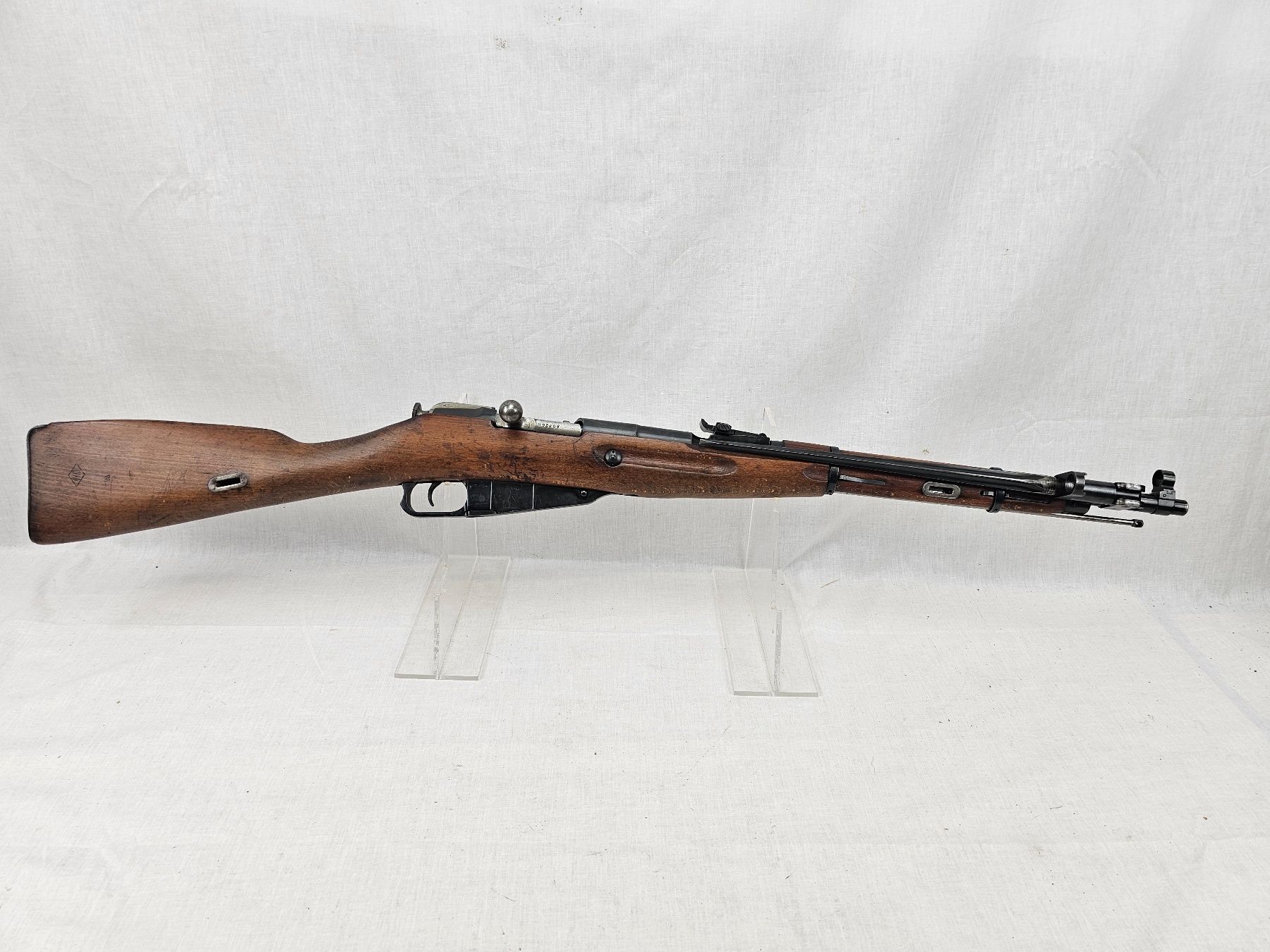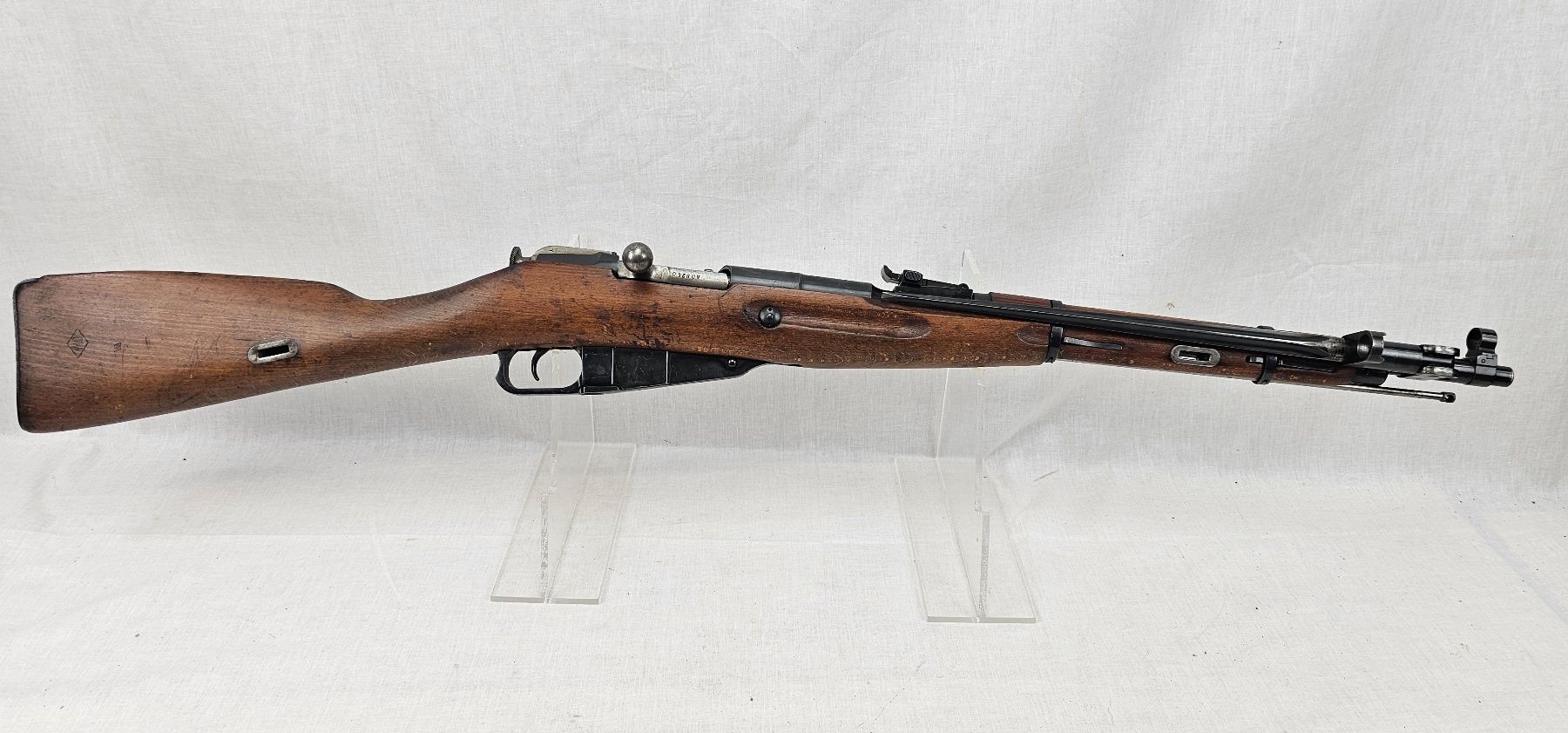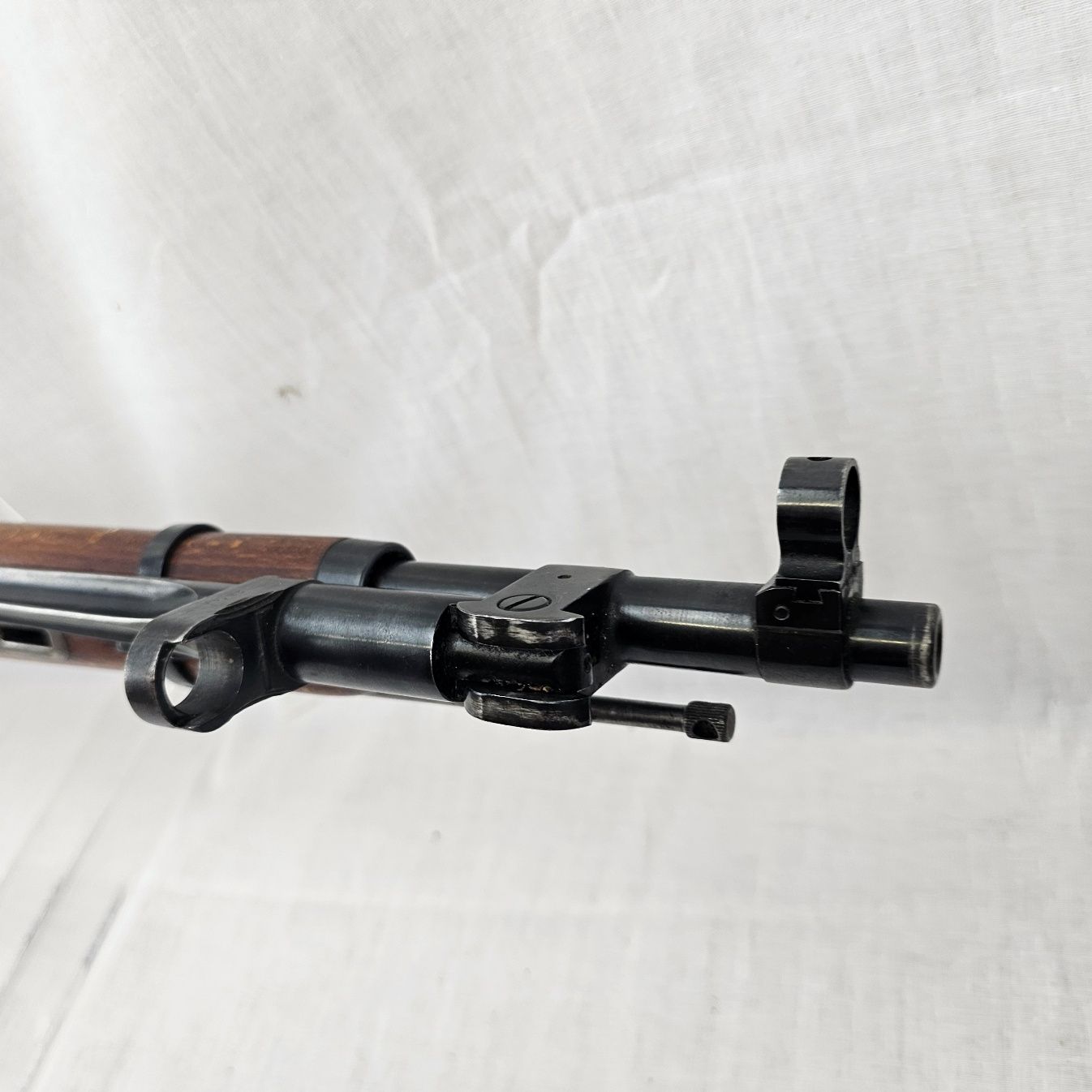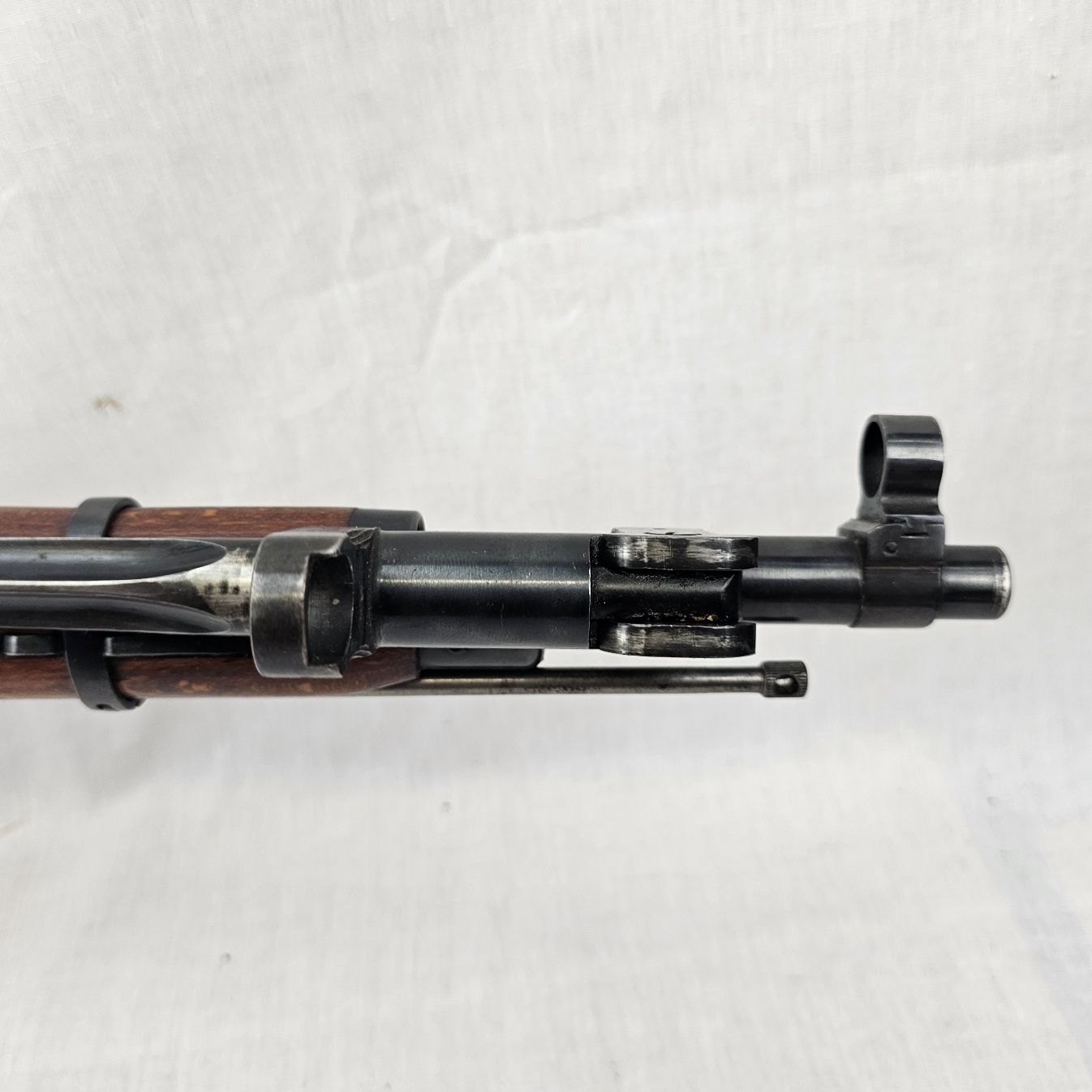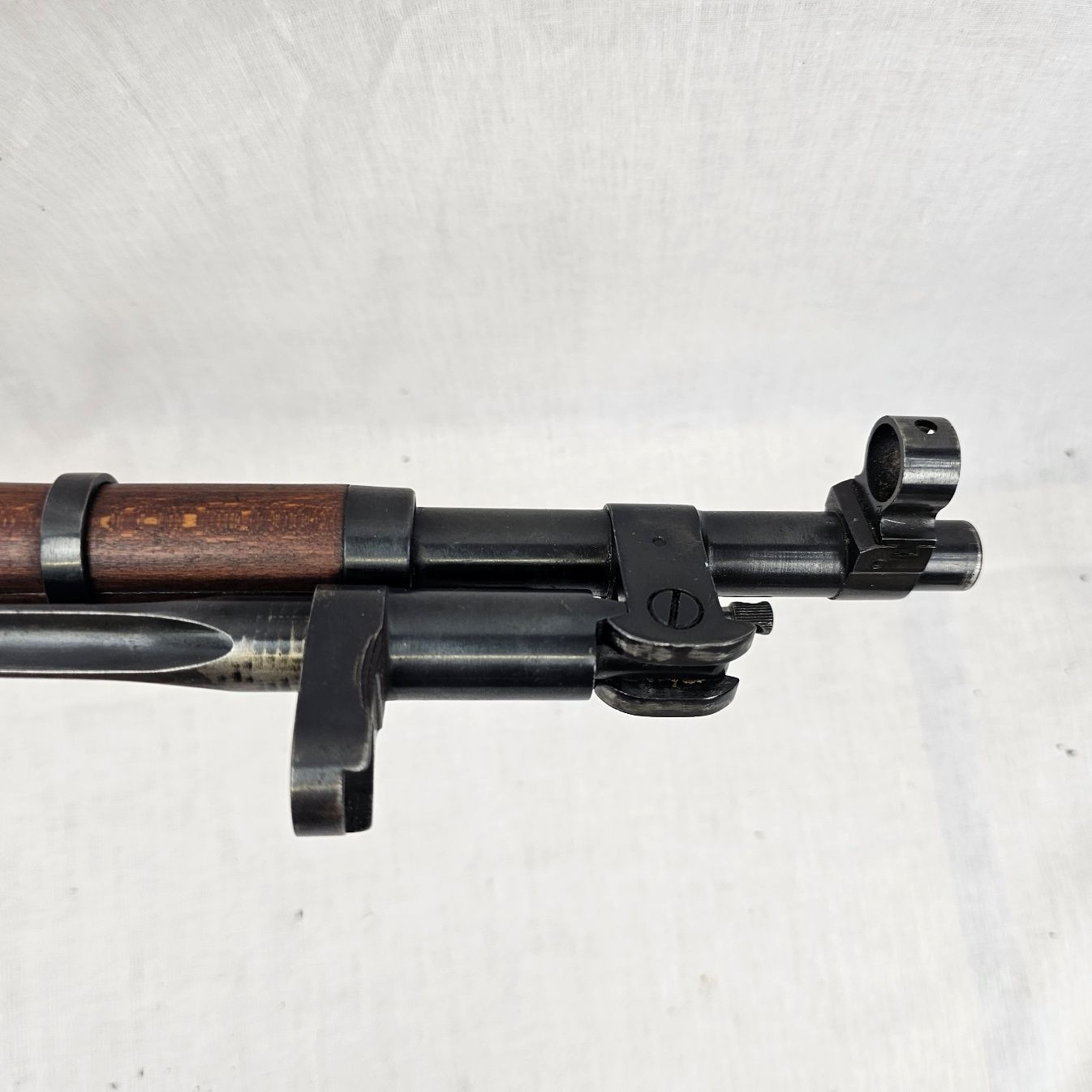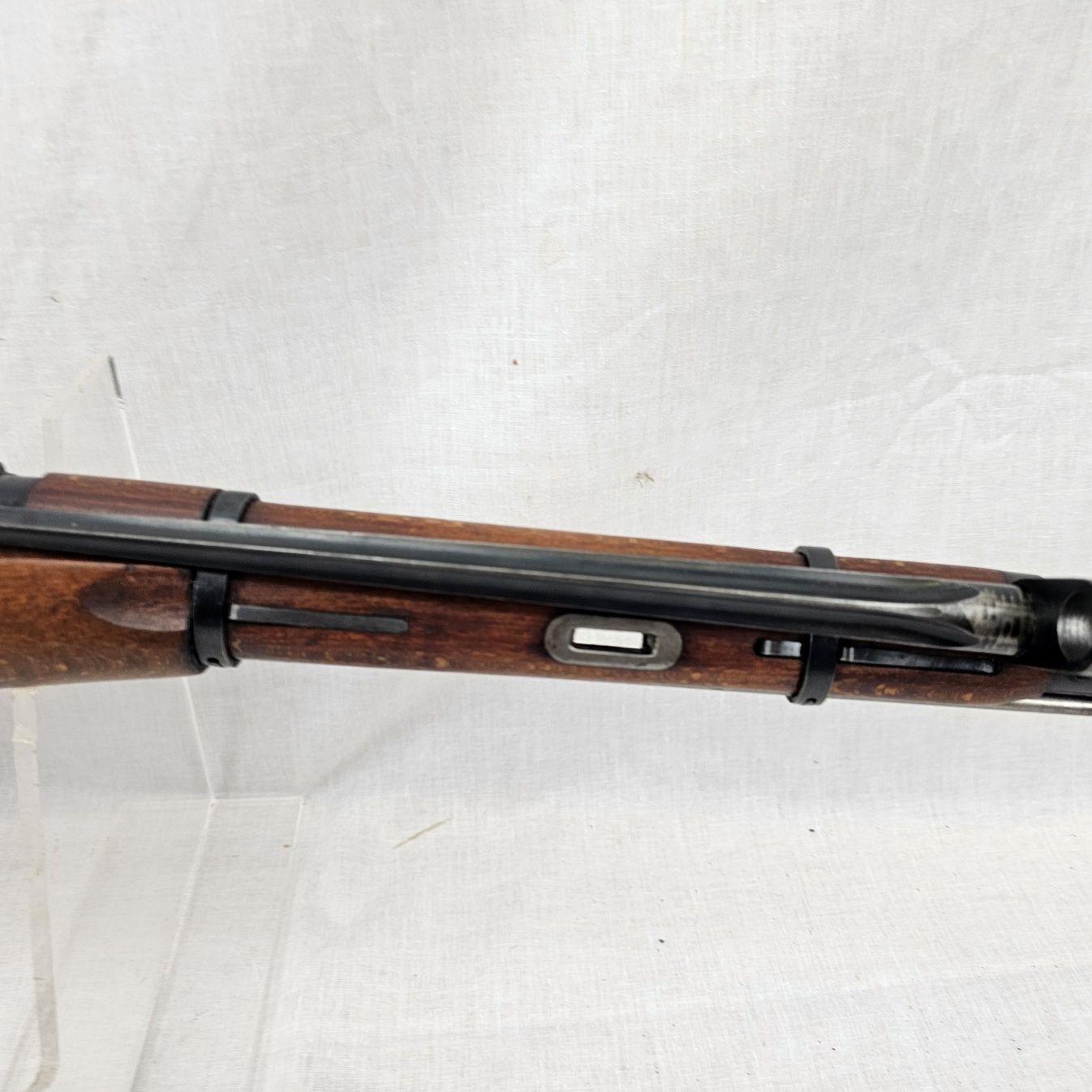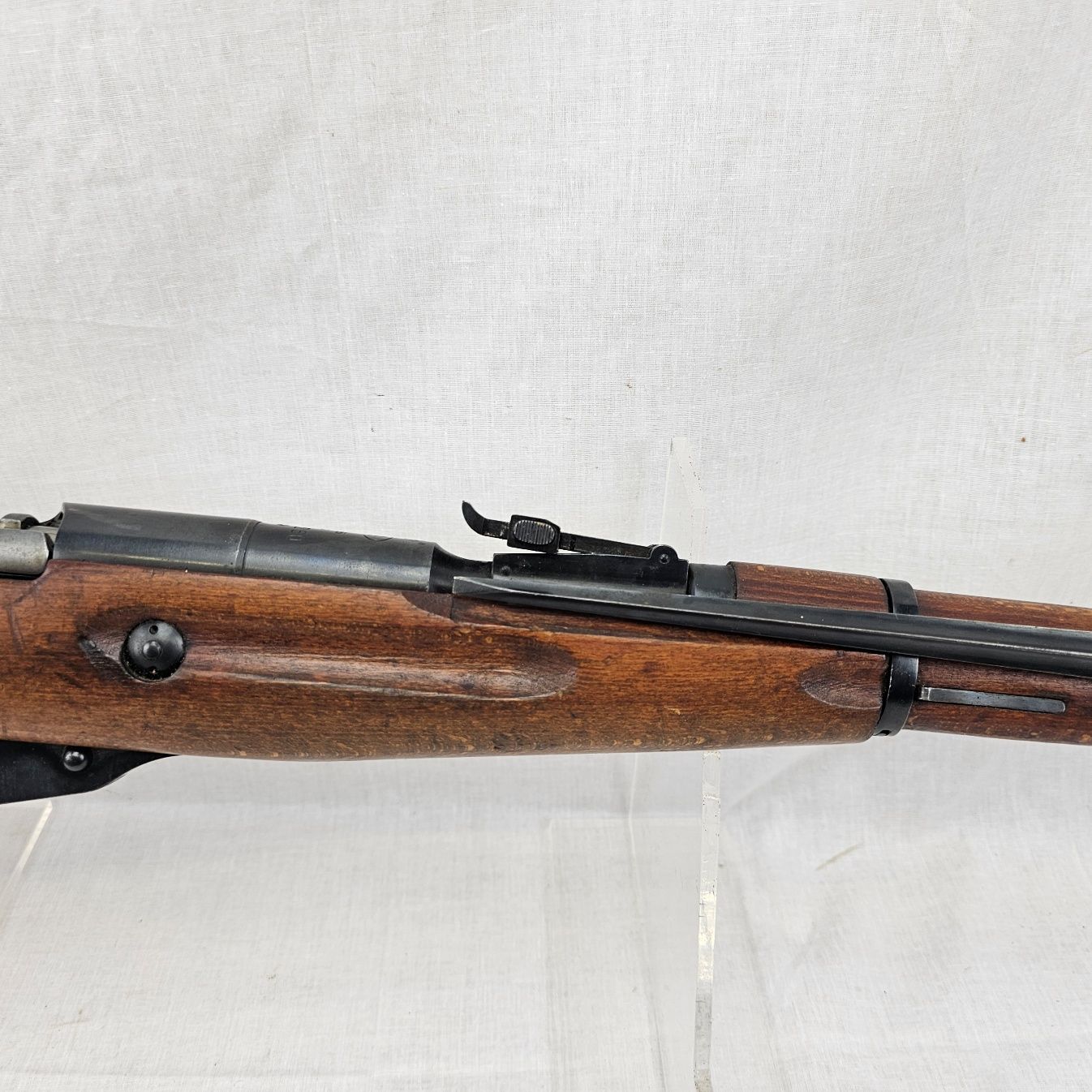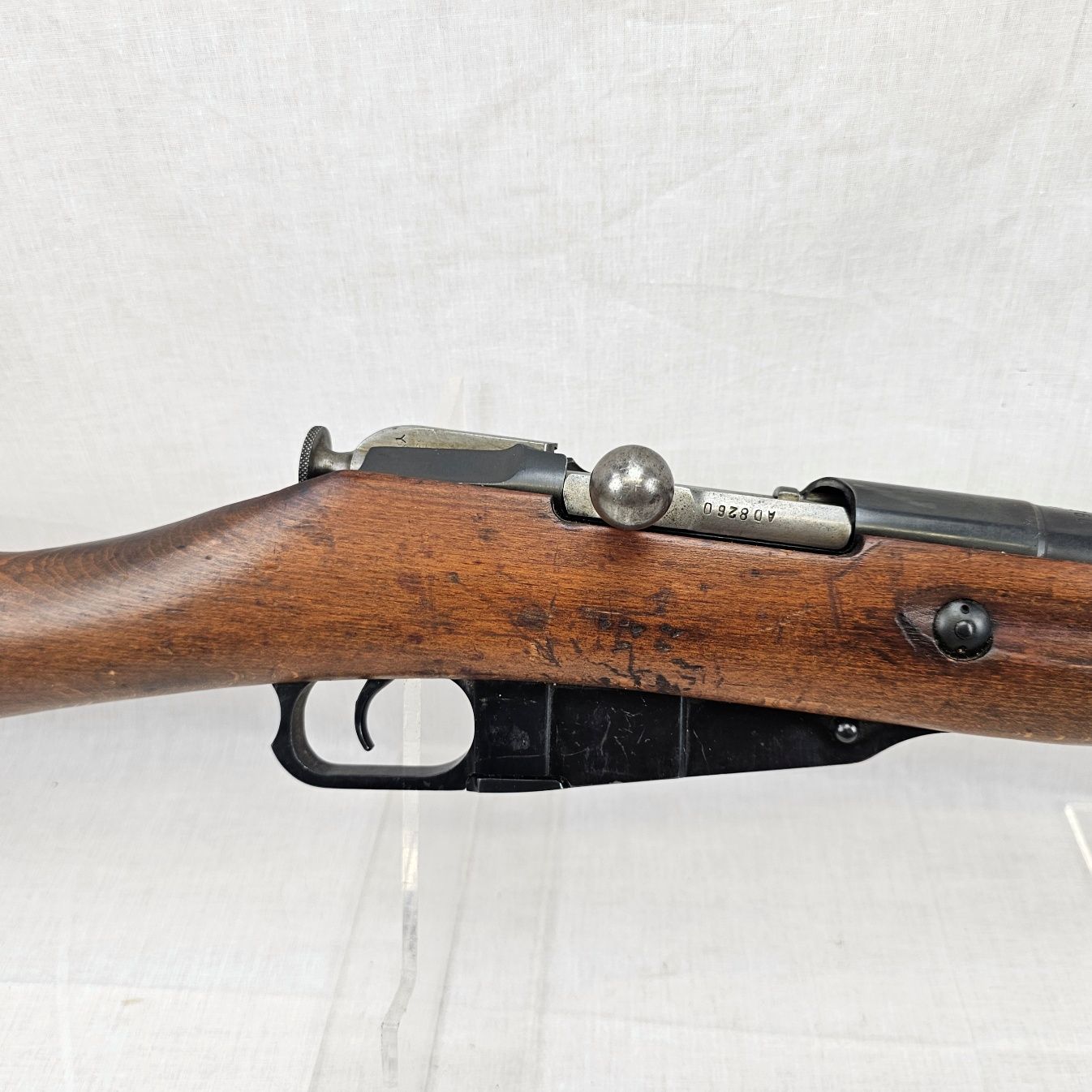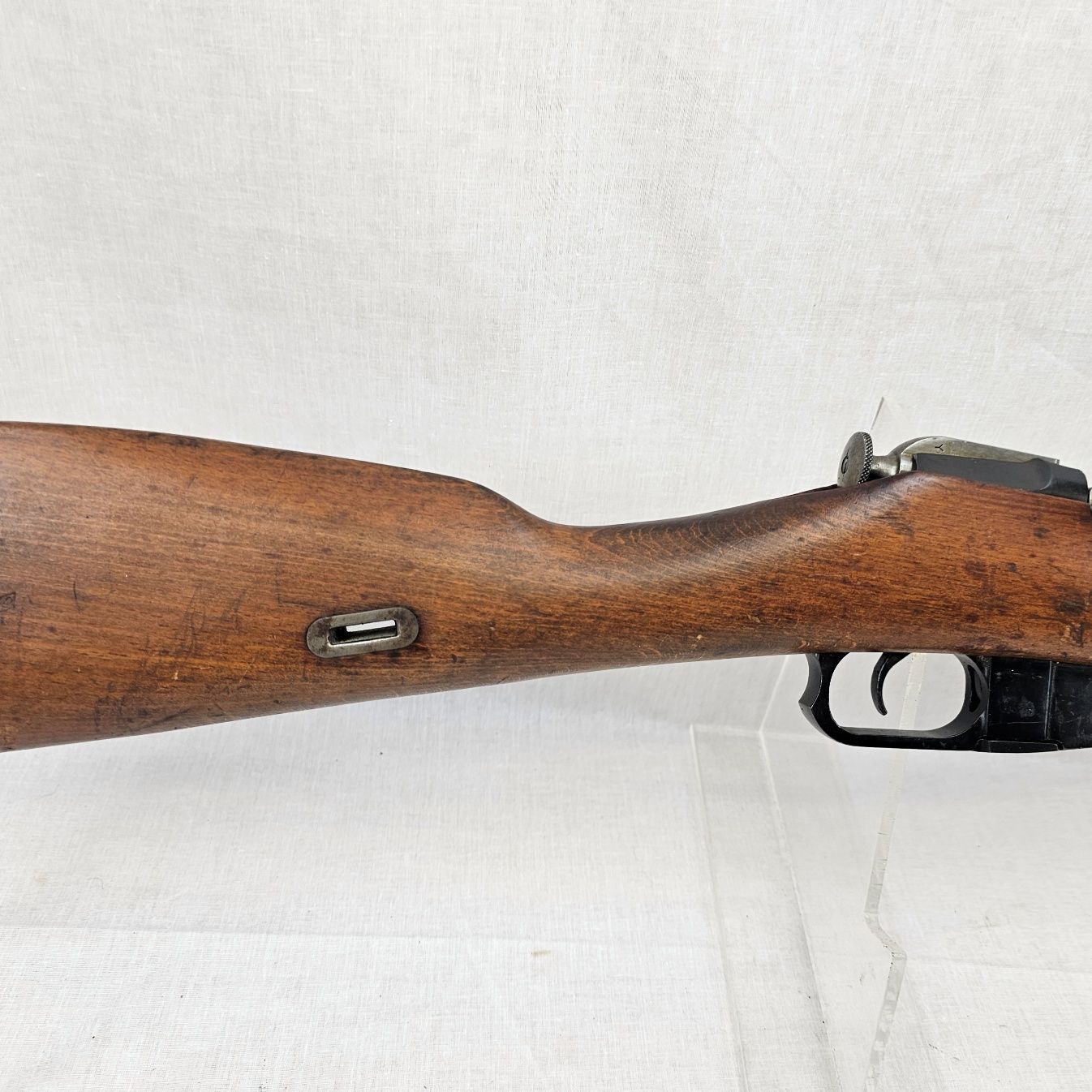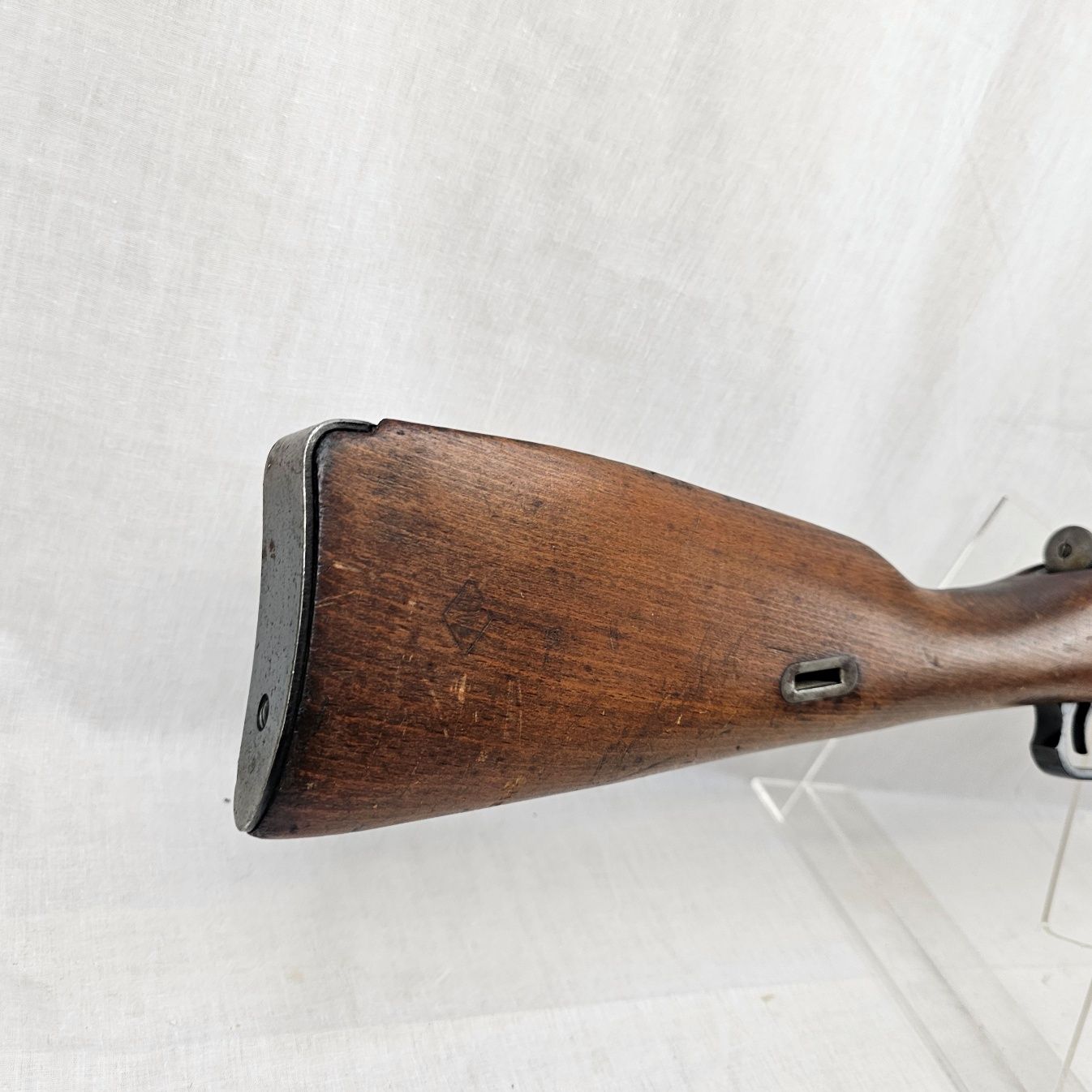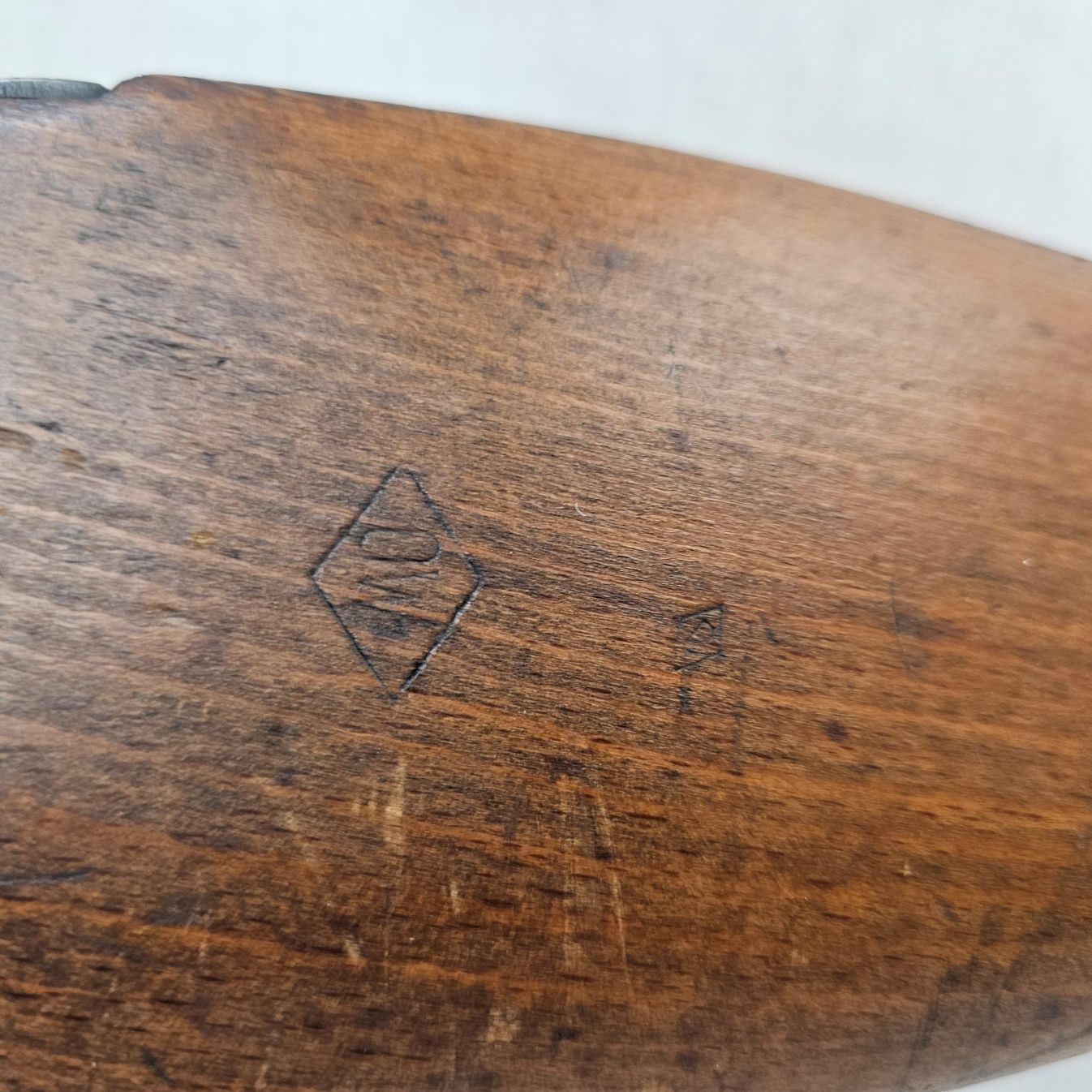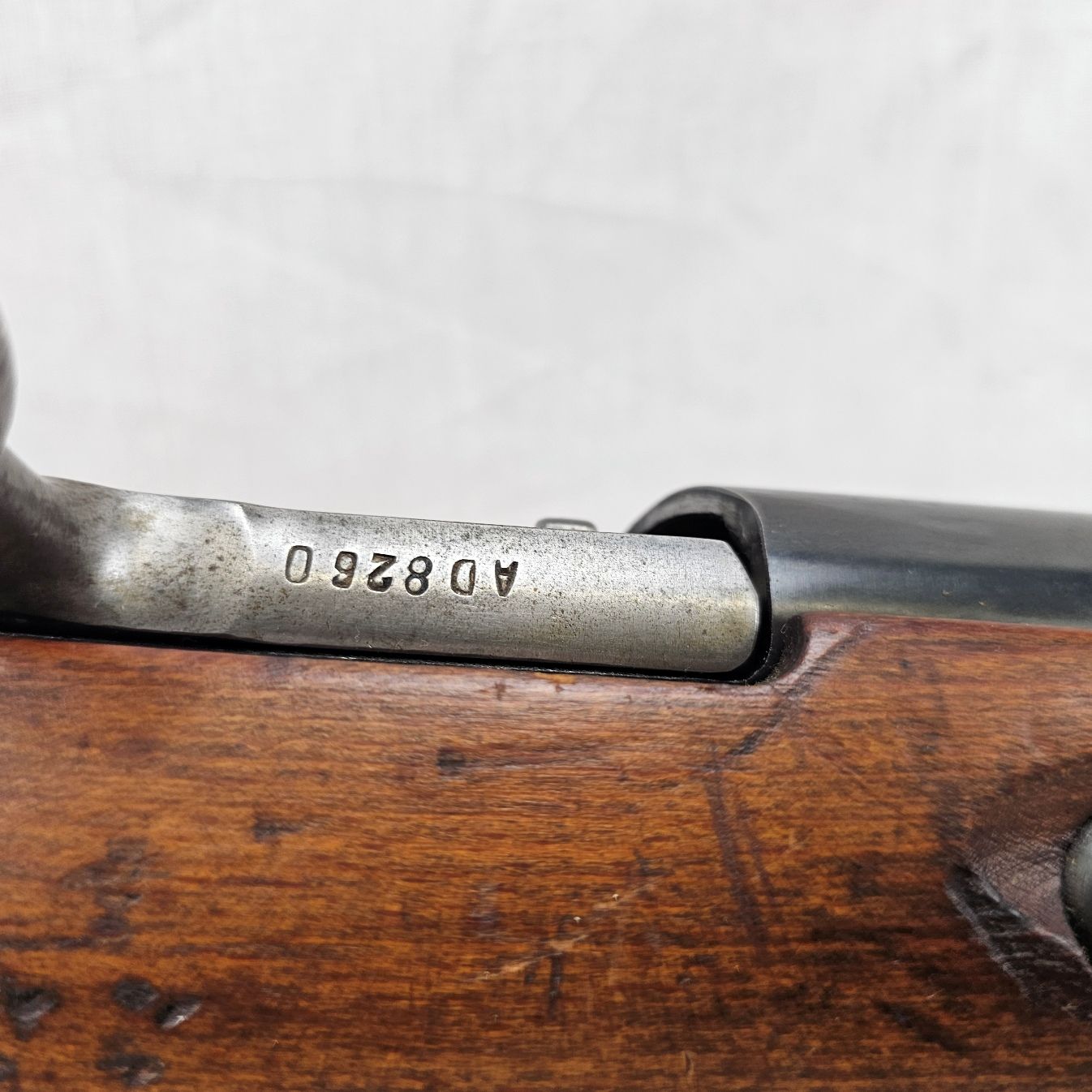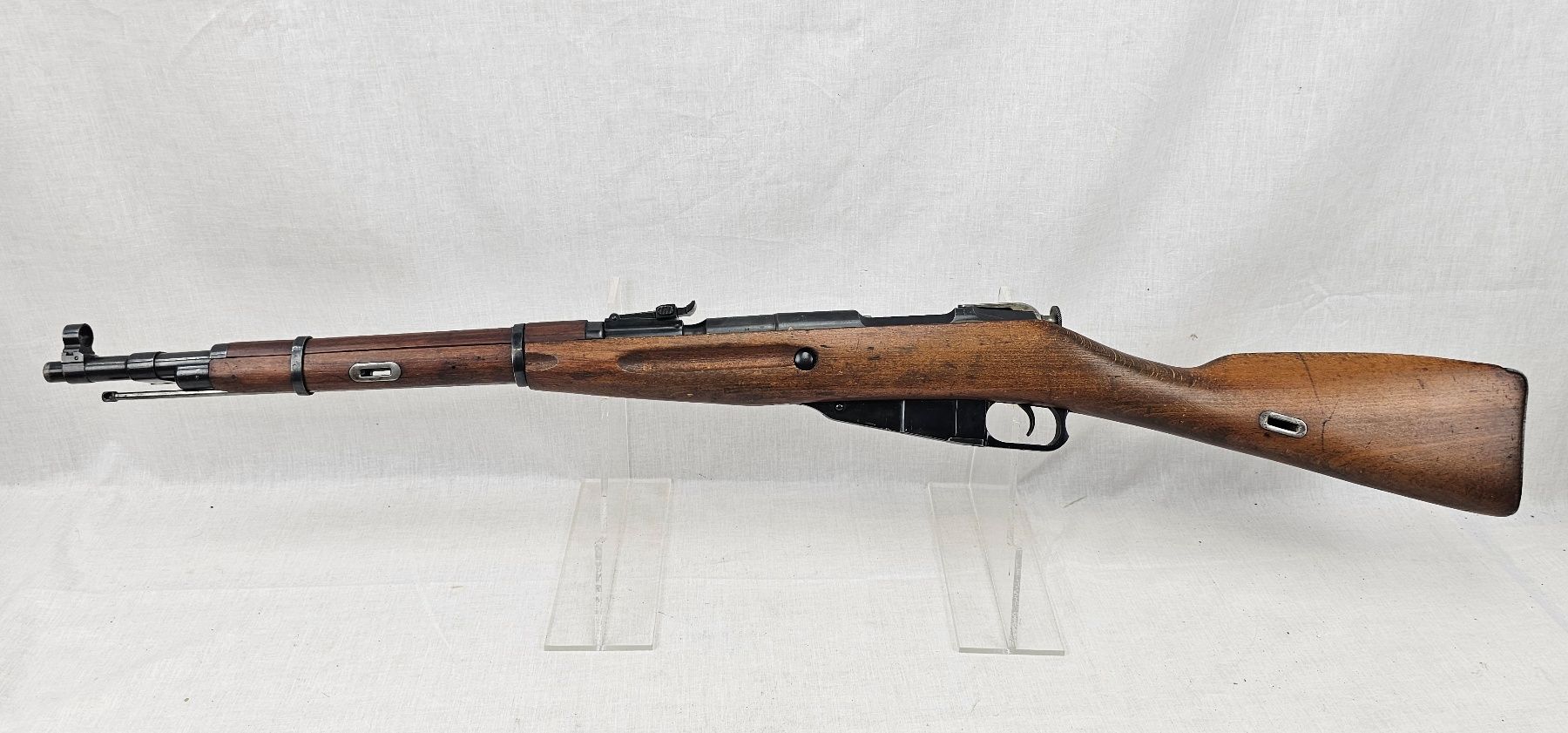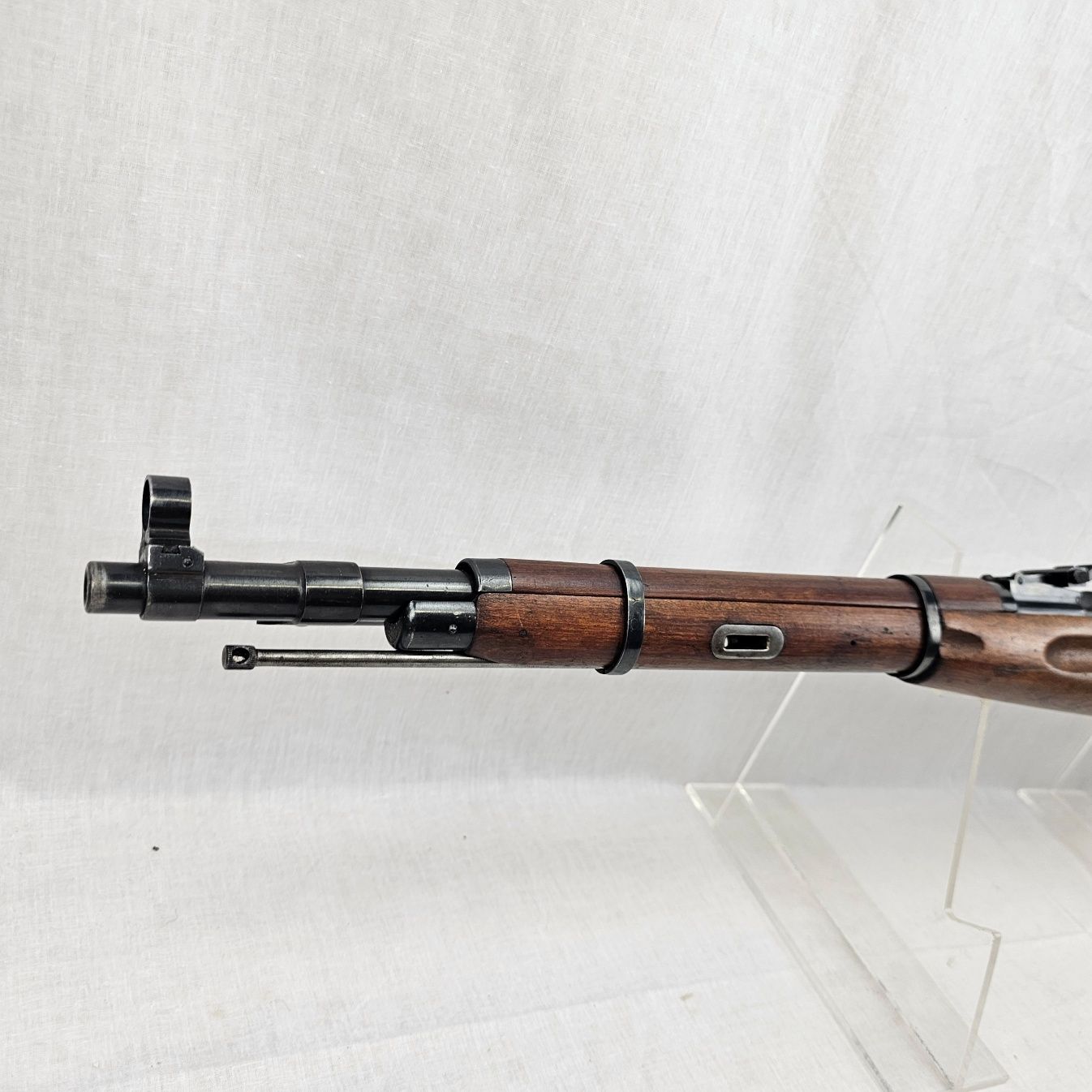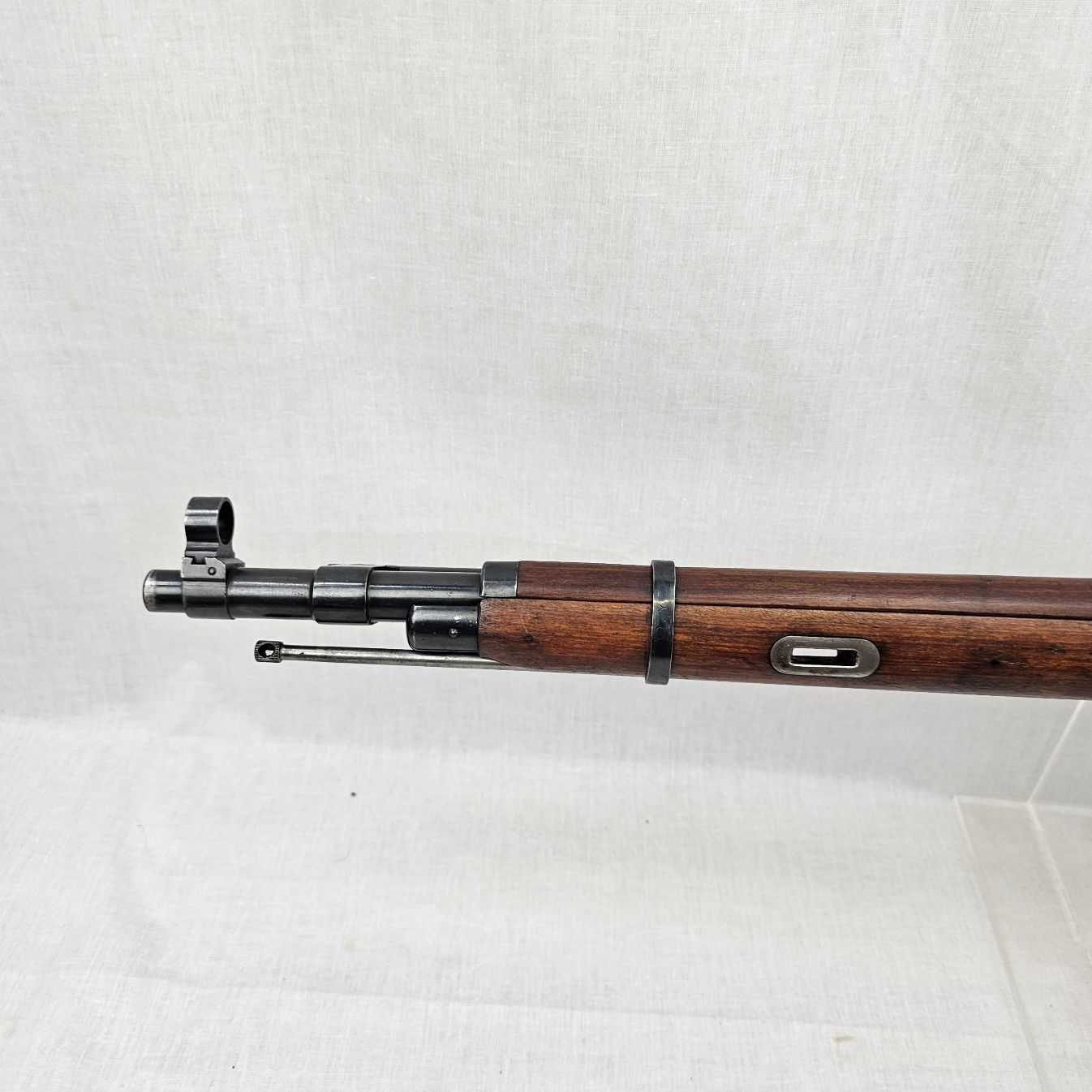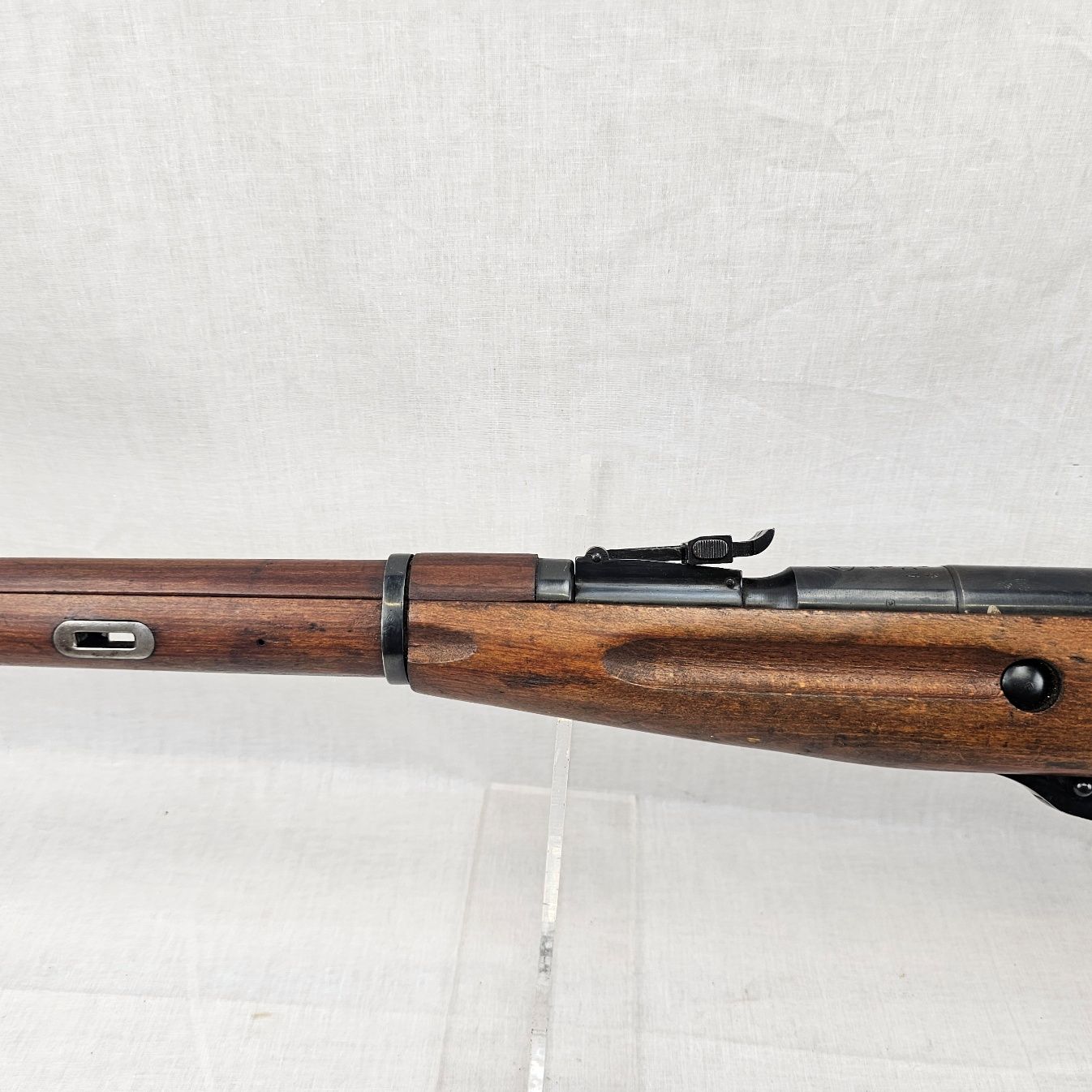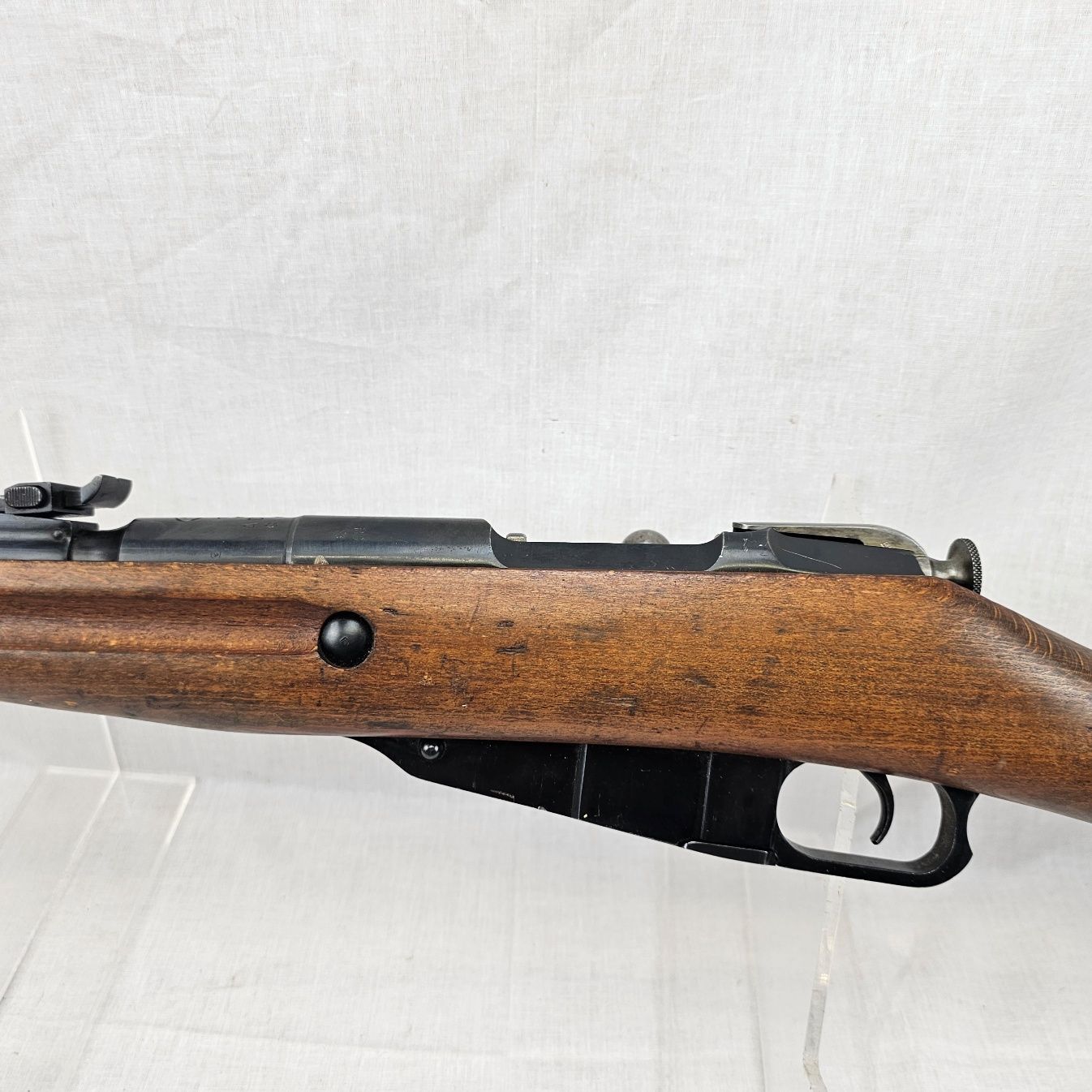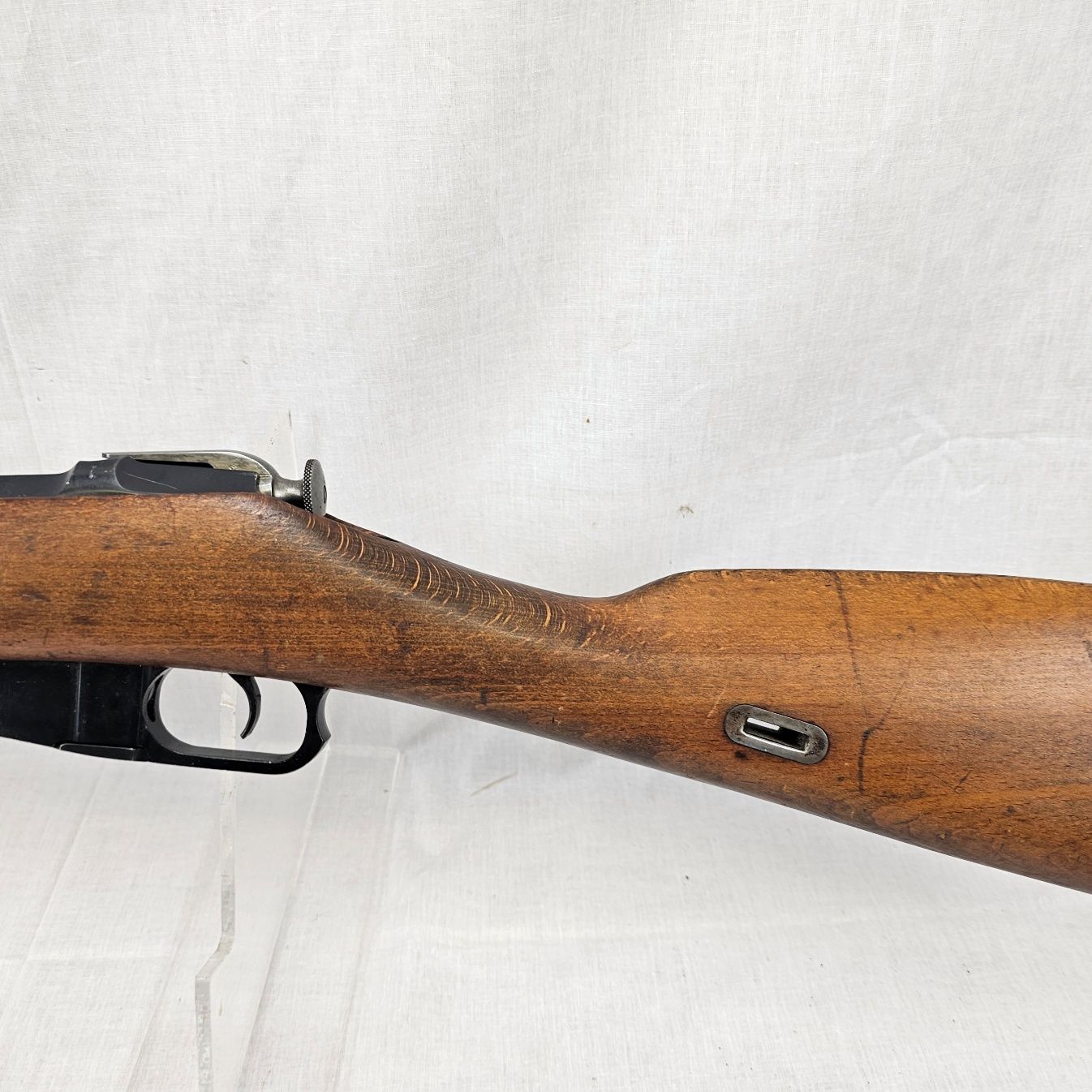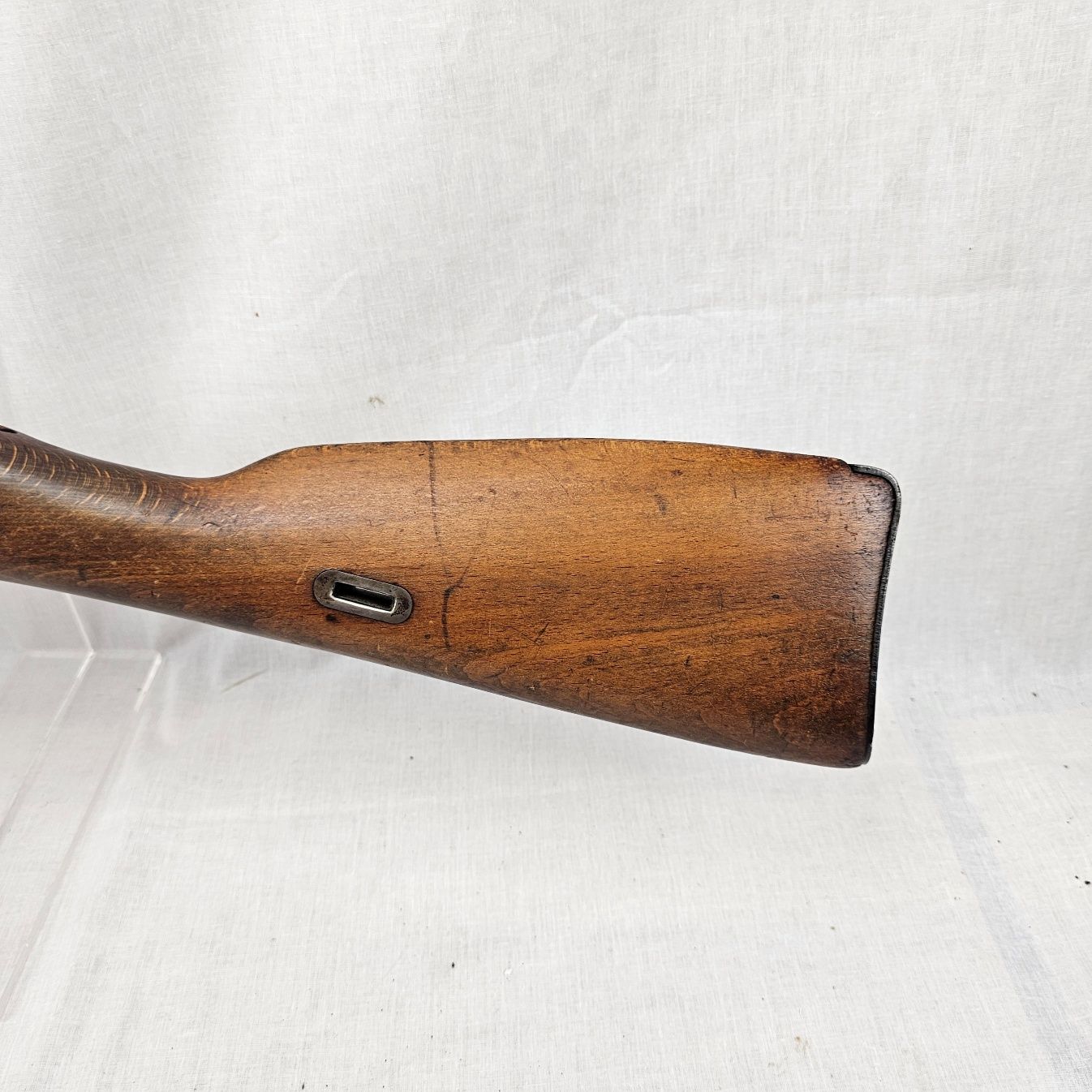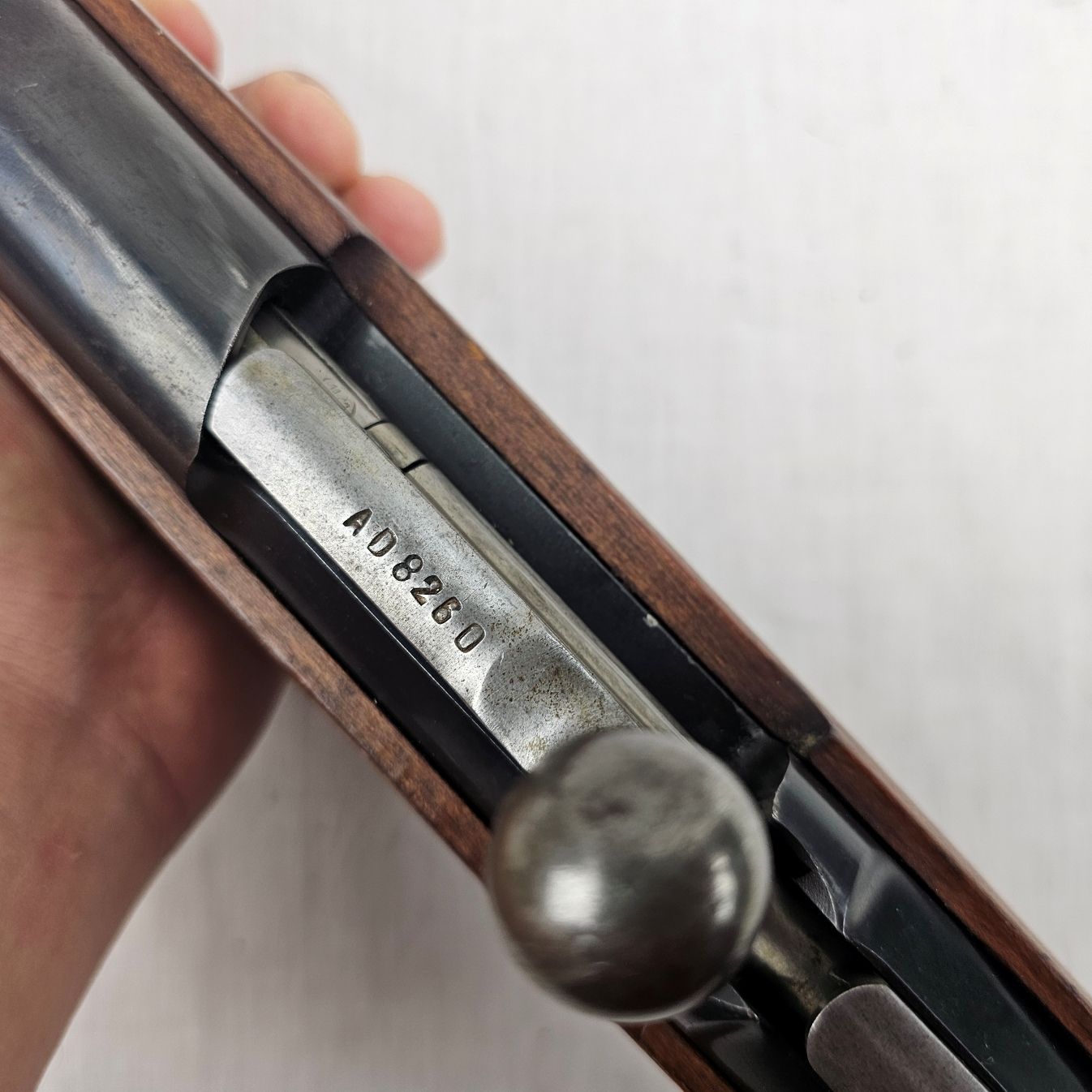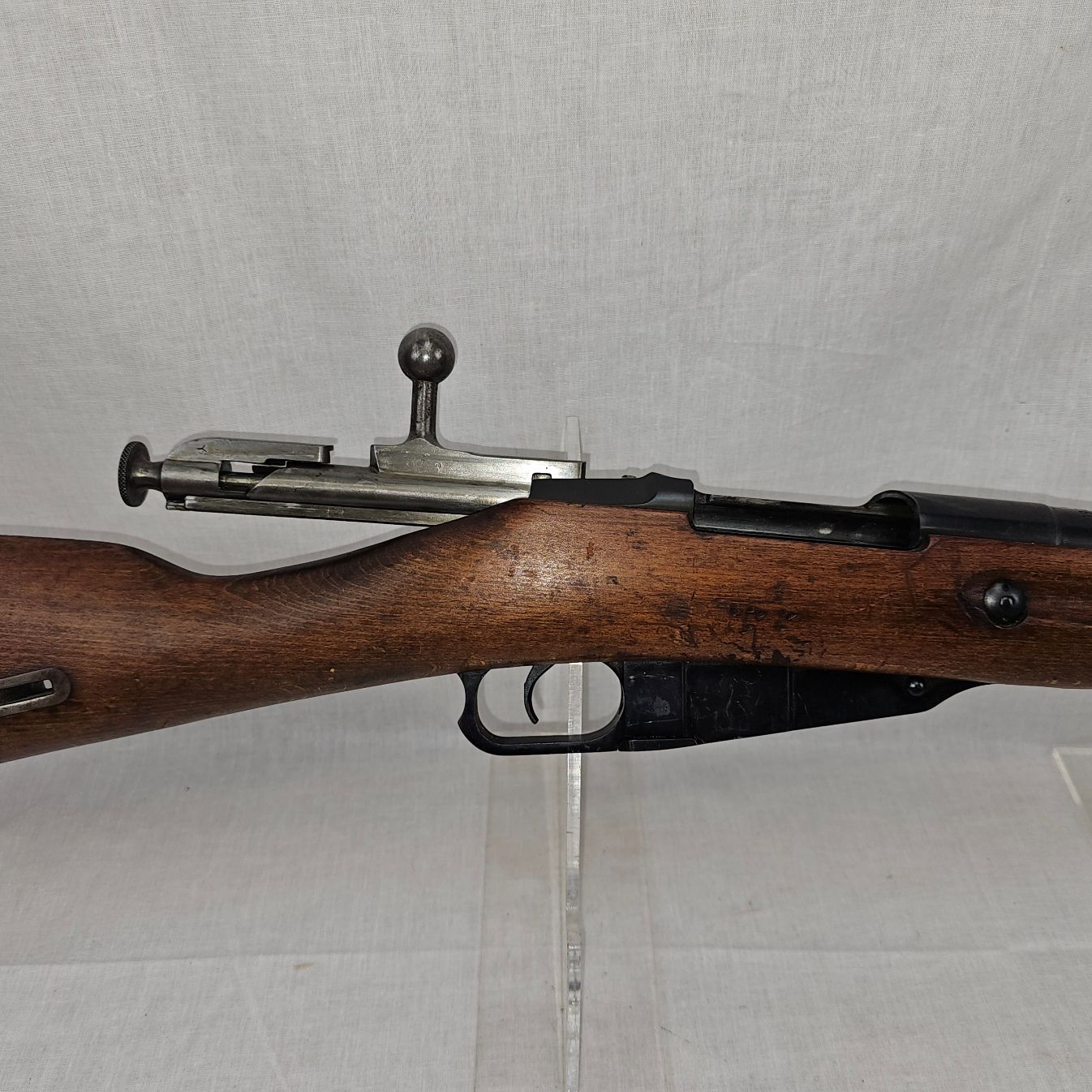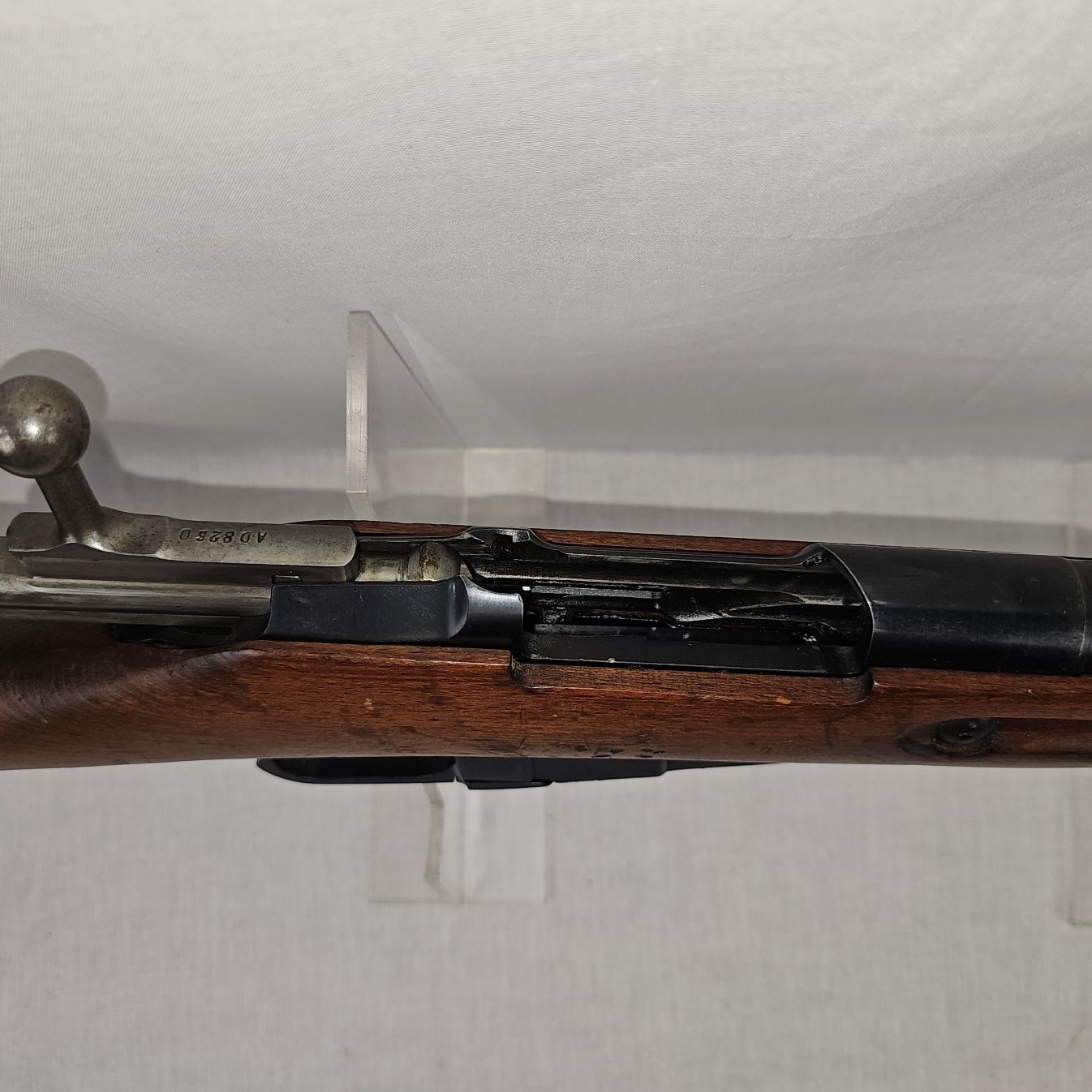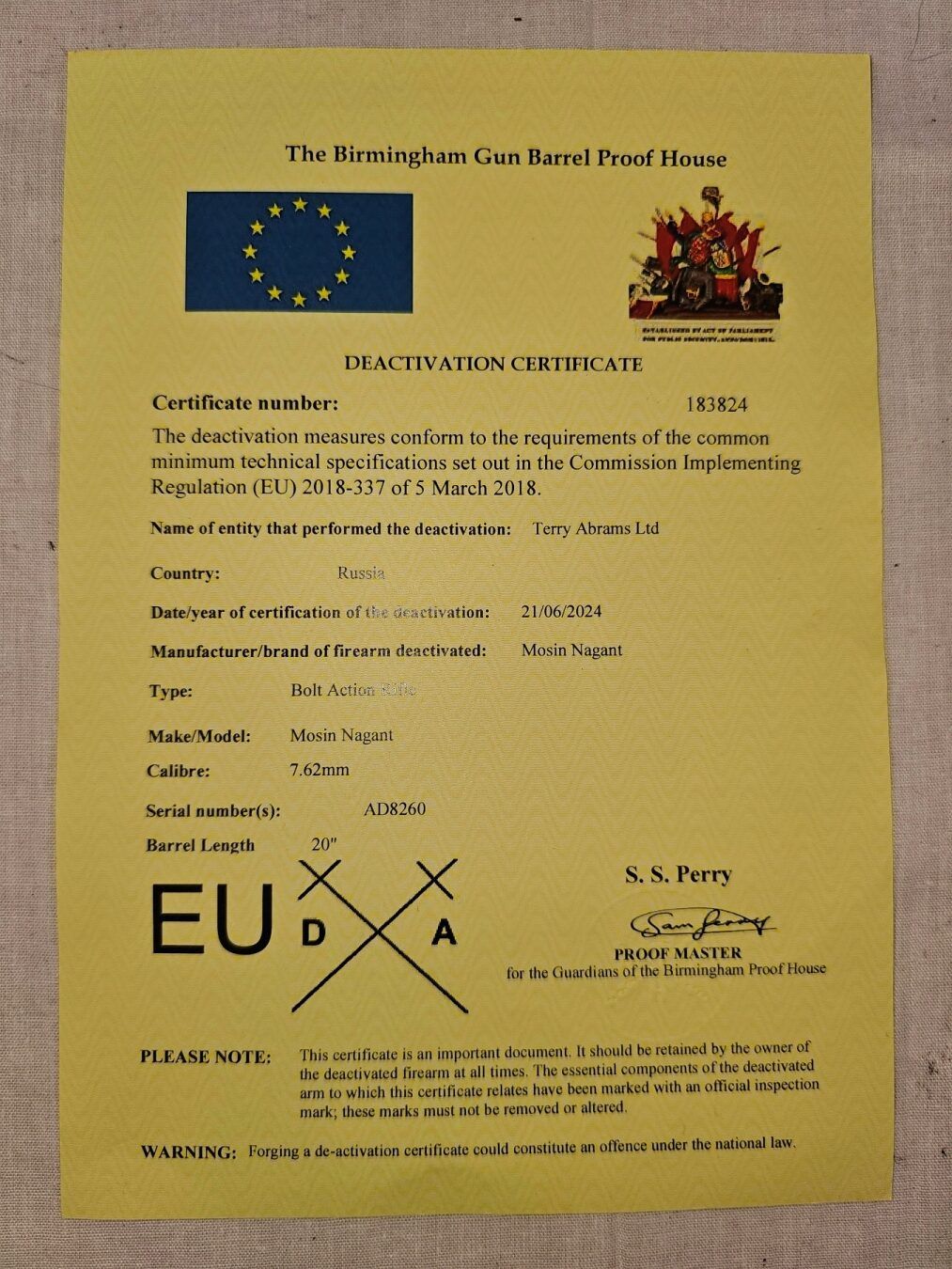~ M44 Polish Made 1955 Dated Moisin-Nagant carbine – Deactivated ~
The Polish M44 Mosin-Nagant Carbine, produced in 1955, is a highly regarded variant of the Soviet-designed Mosin-Nagant M44 carbine. These rifles were manufactured by Radom Factory 11 (Zakłady Metalowe im. gen. Świerczewskiego) in Poland during the early Cold War era. Known for their quality craftsmanship, Polish M44 carbines are sought after by collectors for their historical significance and build quality.
The carbine is serial numbered with the matching number AD8260.
It comes with its EU/UK deactivation certificate.
The bolt moves but it can’t cock nor dry fire. The trigger doesn’t move.
The bayonet is present.
Dimensions:
Overall Length: 40 inches (102 cm).
Weight: Approximately 8.8 lbs (4 kg) unloaded.
Historical Context
After World War II, Poland fell under Soviet influence and became part of the Eastern Bloc. As part of its military standardization with the Soviet Union, Poland adopted Soviet designs, including the Mosin-Nagant, for its armed forces.
The M44 carbine, a shorter and more maneuverable version of the original Mosin-Nagant, was ideal for post-war military needs.
Polish Production:
Between 1950 and 1956, Poland manufactured its own version of the M44 under Soviet supervision.
The Polish M44 was nearly identical to the Soviet version but was produced to high standards, reflecting the Radom factory’s reputation for quality.
Production ceased in 1956 as the Warsaw Pact nations transitioned to newer firearms like the SKS and the AK-47.
The Polish M44 was issued to the Polish People’s Army and paramilitary units.
It saw limited use in the field due to the rapid adoption of more modern semi-automatic and automatic weapons.
Chambered for the 7.62x54mmR cartridge, a powerful and versatile round used in both rifles and machine guns.
Barrel Length: 20.4 inches, designed for improved maneuverability compared to the full-length Mosin-Nagant rifle.
Action: Bolt-action with a simple and robust design inherited from the original Mosin-Nagant.
Features a folding cruciform bayonet, which folds to the side of the barrel for storage and quick deployment.
Stock: Made from Polish hardwood, typically beech or birch, and finished with a reddish stain.
Metal Parts: Durable blued steel for corrosion resistance.
Known for excellent machining and finish compared to Soviet counterparts.
Rear sight graduated up to 1,000 meters, though practical accuracy is limited by the shorter barrel.
Front sight is a hooded post.
Internal 5-round magazine, loaded via stripper clips or individual rounds.
Polish M44s are marked with the Radom Factory 11 stamp, an encircled “11,” indicating their origin.
Serial numbers and production year (e.g., 1955) are typically stamped on the receiver.
Additional proof marks and inspection stamps may also appear.
Polish M44s are widely regarded as some of the best-made Mosin-Nagant carbines due to the Radom factory’s precision and attention to detail.
The finish on Polish models is often superior to Soviet examples, with smoother machining and better wood quality.
Like all Mosin-Nagant designs, the M44 is known for its ruggedness and reliability in harsh conditions.
The integrated bayonet made the M44 versatile for both close combat and standard infantry roles.
The Polish M44 reflects Poland’s role in the Warsaw Pact and its efforts to standardize Soviet-designed weapons for its military.
It is a reminder of the Cold War era and the military-industrial collaboration within the Eastern Bloc.
Polish M44 carbines are highly desirable among collectors due to their limited production and superior craftsmanship.
Rifles in original condition, with matching serial numbers and intact bayonets, are particularly valued.
Production was relatively low compared to Soviet M44s, increasing their scarcity.
The 1955-dated models are among the later examples produced, representing the tail end of M44 production in Poland.


